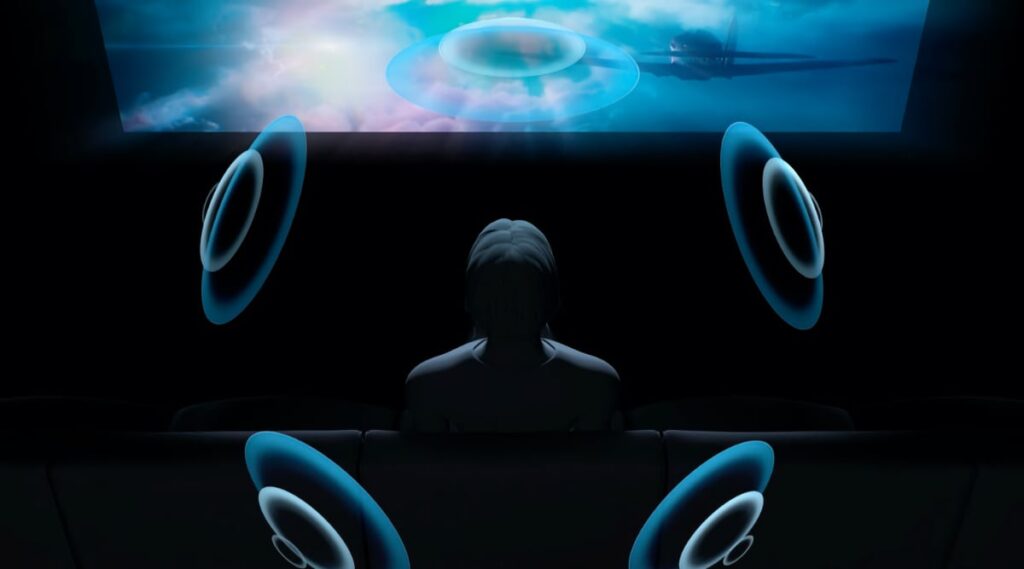
Audio specialization creates a three-dimensional soundscape that makes the sound seem to come from various directions.
It can give the listener an enhanced sense of immersion as if they were in the same room with the source of the sound. It is possible to use spatial audio for video games, movies, and virtual reality.
Table of Contents
Introduction:
There has been an increase in the adoption of 3D audio by VR companies in 2017. Compared to conventional audio, this audio has a different impact on the brain and creates a more enjoyable listening experience.
Virtual reality platforms provide spatial audio, which is one of the most important aspects of the experience. The purpose of this article is to discuss Spatial Audio and how it works.
What is Spatial Audio?
Spatial audio creates a three-dimensional soundscape and has the effect of making the listener feel as if the sounds are coming from all directions.
Several methods can be used to achieve this, including surround sound, binaural sound, and wave field synthesis.
From movies and video games to virtual reality and simulated environments, spatial audio can create a more immersive and realistic listening experience.
How does Spatial Audio work?
As a result of spatial audio technology, sounds can be perceived to originate from specific locations within three-dimensional space. Multiple loudspeakers are placed around the listener to reproduce the sounds, while timing and level are carefully controlled by each speaker.
Top 5 Benefits of Spatial Audio?
- An immersive audioscape is created using spatial audio, a type of 3D audio.
- A truly immersive experience can be created when spatial audio is combined with other audio cues, such as head tracking.
- Spatial audio has several benefits, such as the ability to localize sounds and create a realistic sense of distance.
- Using spatial audio can enhance the immersion and realistic experience of gaming and virtual reality applications.
- Additionally, spatial audio can help to reduce listener fatigue and improve overall audio quality.
Use cases of spatial audio?
Is spatial audio used in a wide variety of ways?
- There is an increasing demand for spatial audio as a way to enhance the audio experience in a variety of settings.
- There is a common use case for spatial audio in gaming, where it enhances the immersion and realism of the experience.
- A further application of spatial audio is in movies and other video content, where it can be used to create a more realistic and dynamic soundscape.
- As an additional benefit, spatial audio can be used in a variety of educational and training applications to assist individuals in learning more efficiently.
- Audio specialization can be used for a variety of purposes, including creating an immersive listening experience, improving audio quality for videos, and enhancing communication clarity in loud environments.
- By placing the sound in the same location as the video images, spatial audio can create a more immersive and realistic video experience.
- Providing a clear and separate auditory channel for the listener in noisy environments can help improve communication.
The technology behind Spatial Audio
Soundscapes that accurately reflect the position of objects in three-dimensional space are the key to creating realistic spatial audio. There are a variety of technologies that can be used to accomplish this, such as binaural recording, wave field synthesis, and head-related transfer functions.
Using two microphones to record sound from different directions, binaural recordings are a type of audio recording. A wave field synthesizer creates three-dimensional soundscapes by using a large array of speakers. Mathematics models that simulate the interaction between sound waves and the human head are known as head-related transfer functions.
It is possible to create realistic spatial audio using all of these technologies. There are, however, advantages and disadvantages associated with each. As the most realistic recording method, binaural recording is also the most expensive and requires special equipment.
Despite being less realistic than wave field synthesis, it is far less expensive and can be used with standard loudspeakers. It is the easiest to implement head-related transfer functions, but they are the least realistic.
Depending on the application, a particular technology may be used. It is common to use binaural recording when creating a three-dimensional soundscape for movies and music. As a result, it is not suitable for use in virtual reality, as it requires special equipment and is costly.
As a result, it is not suitable for use in virtual reality, as it requires special equipment and is costly. Due to their relative ease of implementation and ability to provide a good sense of immersion, head-related transfer functions are the most popular choice for virtual reality applications.
Conclusion:
Space audio is a futuristic audio technology that is rapidly gaining popularity. There has been a significant impact on how we listen to music and watch movies as a result of this technology.
It is particularly important for fields such as virtual reality and three-dimensional sound.
There is no doubt that you will become familiar with this technology shortly if you are not already. The future of audio and video will be dominated by spatial audio.







